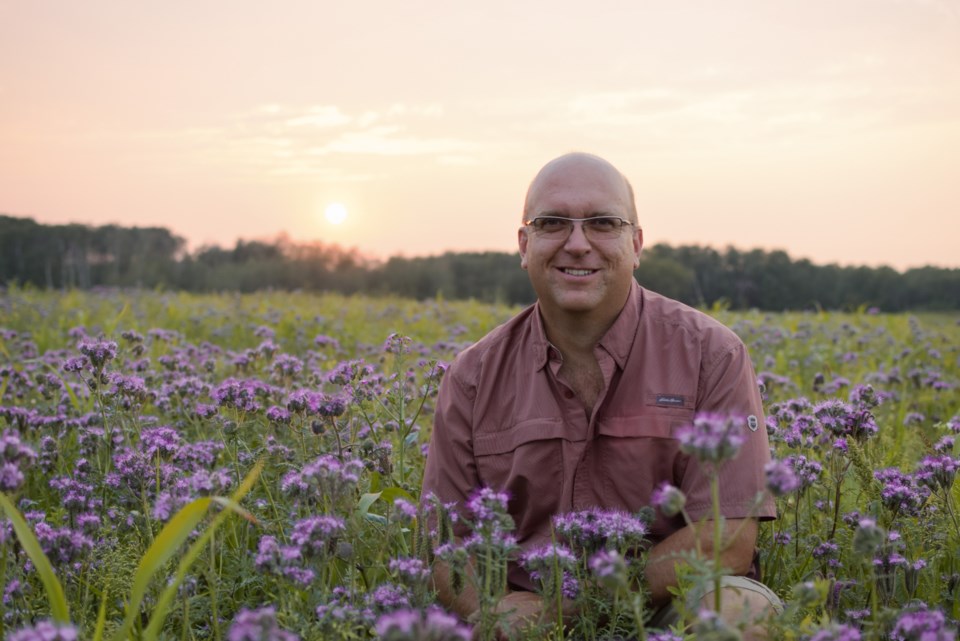What is soil health and why is it so important?
That is one of the questions a new book by a local area author looks to answer, and more importantly to provide essential information for farmers who want to increase the fertility of their fields for increased production.
Cover Cropping in Western Canada is the first book by Saltcoats area farmer Kevin Elmy, best known for years involved with Friendly Acres Seed Farm and more recently as the man behind covercropping.ca
So how did Elmy go from producer to author?
“When on the road all winter doing winter meetings, people we’re asking similar questions for the last few years,” he told Yorkton This Week. “Producers felt confused on where to start. They needed a resource to help guide them on their soil regeneration journey. There are a lot of excellent resources out there but nothing from Western Canada. I thought maybe it was a good way to help share my experiences and findings.”
And, Elmy does have an extensive background in terms of agriculture.
He convocated from the U of S in 1992 and from there worked as an agronomist for Clements in Russell, Manitoba.
It was then on to become an assistant elevator manager in Carbon, Alberta in 1993, moving to Regina to work for Saskatchewan Wheat Pool as a seed production coordinator from 1994 to 1996.
Next Elmy worked for SeCan Association from 1996 to 1999 as a marketing representative, before moving back to Saltcoats when he bought land in 1999 and worked for Sharpe’s Soil Service as the Seed Manager until 2000.
“Then we concentrated on building our farm, seed sales, agronomy, and new opportunities,” he said.
“I was a consultant for Western Ag Labs for about six-years, worked as a marketing rep for Quarry Seed for seven-years, and started Cover Crops Canada in 2008.”
Currently Elmy is working as a cover crop consultant for Imperial Seed since 2009, as well as doing some work with General Mills Regenerative Ag program in the Melfort area.
“I have gained experience by working in many different aspects in the agriculture field, which helped me to understand it more,” he said.
Still Elmy has no formal training as a writer past “dabbling” writing articles for Grainews for 10-years about what he was “seeing and doing on the farm.”
But, Elmy dove into writing.
“Writing was easy,” he said. “Keeping my thoughts gathered so I did not repeat myself was the toughest. There are so many good resource people out there that are paving the way for us with so many ‘new’ ideas to produce food. ‘New’ because most of this is based on old agronomy.”
It helped that Elmy said he retains information well.
“My memory is good at remembering conversations, speaker’s comments, experiments and observations I have seen - (my Wife’s birthday or anniversary, not so much), so pulling stories together was relatively easy.”
Then his wife stepped into buff out some of the rough spots.
“Christina spent a lot of time editing the different versions, making my English more bearable and more clear,” he said.
Ultimately the most difficult aspect of the book was getting it started.
“It started about five years ago. I did not know where to start; whom to talk to. What it would cost. All the details (of doing a book),” said Elmy.
The result is that Cover Cropping in Western Canada is an informative read for producers.
“Producers are voicing they want to change their management systems,” he related. “I wanted to pull information together as a quick reference to get producers started in the ‘right’ direction.
The book is available at www.covercropping.ca
“That’s why I spend time talking about setting goals, defining soil health, or getting producers to describe where they want to be. Everyone sees success differently. Setting goals and attainable expectations leads to success. Because there are so many opportunities to meet goals the book may seem at times a little vague. But it is getting people to set up their own system for regenerative agriculture.”
So what is the best aspect of the book?
“It is one of the first books I have seen with ideas and guidelines on a journey to regenerative agriculture within Western Canada,” reiterated its author. “There is a section on plant species and what they do, how to design blends and how to manage them. It is a how to guide to make a map of how to do regenerative Ag.”
How Elmy feels about the book is still something he has not quite determined, having only seen a pdf version so far.
“Once I see a printed version I think it will hit me,” he said, adding overall, yes he likes what he has created. “I tried to keep it simple and short. So far the initial response to preprint announcement has been overwhelming.”
The potential audience is broad in terms of producers.
“The nice thing with my approach is that I kept it to conventional, organic producers, grain and livestock producers, orchards, vegetable producers, gardeners, and hobby farms, anyone who depends on the soil for their income or their food supply,” said Elmy.
So is there another book to be written?
“Yes, we are always learning,” said Elmy, adding “I am not shy on sharing my opinions. Will it be on cover crops, maybe not? But I’ll see what I missed being clear on in it after people read it. I could almost do a book on each chapter.
“Who knows what the future brings.”

